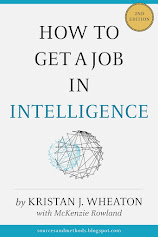I have written previously about the value of the Google Earth Community for leads and other hard to find information concerning virtually any geographic location. Tasks like identifying and describing geographic locations on a map are perfect for crowdsourcing, where lots of people throw a little bit of time at a project. While I would not center my business, law enforcement or military plans around such data, it can provide very useful leads.
Wikimapia, which is very much like the Google Earth Community, allows users to post data concerning any place in the world. When this service first came out, I didn't think it would be able to compete with the Google Earth Community. Apparently, I was wrong.
I gave Wikimapia a second look today (Thanks, Rachel!) and was very impressed with the quantity of information and detail available. Take a look at the image of Bushehr Iran below.
All of the little white boxes are sites that have been identified as something by someone. A good number of the sites identified are in the native language of the country making this a useful training tool for linguists as well.
Related Posts:
Excellent Competitive Intelligence, Law Enforcement World News Mapping Resources
NGO Intel: Southern
COOLINT Part Deux: "The World Through The Eyes Of Editors In Chief"
COOLINT: Heat Map Of Search Terms By Country
9 Great Map Resources
Terrorism Threat Map
Famine Early Warning System
Excellent African Map Source
High Priced Oil Adds Volatility To Power Scramble (NY Times)
World Port Index
Friday, June 27, 2008
Crowdsourcing Imagery Analysis (Wikimapia)
How To Evaluate The Credibility Of A Source (Wiki-how)
Wiki-How has a good, short article on how to evaluate the credibility of a source (Thanks, Mike!). While this article was obviously written in the context of an internet-based source, there is the possibility of a broader application here.
The main points are:
- Think about how reliable you need the information to be. (Comment: I particularly like this as a starting point.)
- Consider the medium with which you are working.
- Research the author.
- Check the date. (Comment: I would add check the date of the information not just the date of publication. I've been burnt on this one...)
- Investigate the publisher.
- Determine the intended audience.
- Check the reviews.
- Evaluate the source's sources. (Comment: This is a particularly effective way to teach source reliability to students. They don't expect it, which makes the less more "memorable")
- Identify bias.
- Investigate the financial or funding sources for sponsored research.
How To Communicate Your Weaknesses In An Interview
How-to Sites
Posted by
Kristan J. Wheaton
at
11:42 AM
1 comments
![]()
Labels: intelligence, intelligence analysis, source reliability, wikiHow
Tuesday, June 24, 2008
Is The EU Prepared For A Bio-Terrorist Attack Or Pandemic? (Original Analysis)
Bill Newton-Dunn is a Liberal Democrat from the UK and a Member of the European Parliament (MEP). He is also a sophisticated consumer of intelligence products and we have done several projects for him. One of our more recent projects, the EU Bio-Preparedness Project, which a mixed team of Mercyhurst grad and undergrad students developed for Bill as part of my strategic intelligence class, involved estimating the state of preparedness within the EU for either a bio-terror attack or a pandemic within the next 3-5 years (The full Terms Of Reference is here).
The students analyzed the differences and similarities between bio-terror and pandemic type events and then analyzed each country within the EU (plus Norway and Switzerland) along eight different preparedness categories: Bio-surveillance systems in place, health care systems, vaccines and antiviral availability, general planning and coordination efforts, specific bio-terror planning, emergency response systems, private-public sector relationships and border security. Finally, they integrated their individual findings into an EU Preparedness Report and extracted Key Findings designed to answer the questions posed by the Terms Of Reference. As with all of our recent projects, the students used a wiki to help collect, analyze, manage and produce their report.
Their top level findings were interesting (I edited the findings for length and the bold is mine):
- "As of February 2008, it is unlikely that Member States' biosurveillance and health care systems are well-integrated or completely prepared to respond to a pandemic or an act of bioterrorism at the international level."
- "However, the creation of the European Center for Disease Control (ECDC) in 2004 is highly likely to play a key role in further integrating EU-level and Member States', plus Norway and Switzerland's, bio-surveillance systems over the next three to five years."
- "By the end of 2008, TESSy, an EU-wide infectious disease surveillance system, is likely to become operational and standardize data collection on infectious disease surveillance, provide one single point for Member States to report and retrieve data, produce uniform reports based on collection data and render a consistent overview of the current situation in the EU."
- "Although it is highly likely that individual countries will continue to make significant progress towards bio-preparedness over the next three to five years, it is unlikely that the EU as a whole will achieve complete preparedness as it still lacks international health care coordination, neglects to mandate that all countries stockpile vaccines and antiviral drugs and has not instituted EU-wide emergency response resources."
Last, but perhaps the most interesting methodological twist the students put on their findings, is a Preparedness Indicators Chart the students put together that summarized their findings. It lays out all the strengths and weaknesses of each country and is definitely worth the look. I have reproduced it below but I know it is fuzzy. Click on the picture below. On that page is a better version and a link to the underlying Excel file itself.

Posted by
Kristan J. Wheaton
at
12:00 PM
2
comments
![]()
Labels: bio-terrorism, intelligence, intelligence analysis, Mercyhurst, pandemic, strategic intelligence, wiki, William Newton-Dunn
Monday, June 23, 2008
Excellent Tracking Service Pushes New Videos To Your RSS Feed Reader (Feedky.com)
 If you are one of those poor guys trying to track all of the open source videos out there that have potential intelligence interest you are probably tired of looking at each and every website each and every day. I know I would be.
If you are one of those poor guys trying to track all of the open source videos out there that have potential intelligence interest you are probably tired of looking at each and every website each and every day. I know I would be.
Along comes Feedky. This excellent little service integrates well with your RSS feed reader (I use Google Reader) and adds a note to your feed every time a new video of interest gets uploaded into YouTube, DailyMotion, Metacafe, Vpod, GoogleVideo, Yahoo Video, Youku, Flickr, Viddler and Blip.TV. That captures most of the major video hosting services out there.
To get started, you just enter your keywords and hit the button. The software then gives you the option of viewing the results on the web immediately or to have the results continuously sent to you via RSS feed. I am not sure how they plan to make money from it but for now it is free. Very nice stuff!
Posted by
Kristan J. Wheaton
at
1:27 PM
0
comments
![]()
2008 Technology, Media And Telecommunications Predictions (Deloitte)
Deloitte has made public its 2008 predictions for the technology, media and telecoms markets (Thanks, Suki!). The most interesting observation, for my money, came from the telecoms report that talked in some detail about the rise of the mobile telecoms companies in developing countries. Deloitte thinks that "operators in developed countries should move quickly if they wish to compete in these markets." Based on our research into sub-Saharan Africa, that seems to be about right. The importance and overall profitability of the prepaid wireless plans there is staggering.
Posted by
Kristan J. Wheaton
at
1:00 PM
0
comments
![]()
Labels: Africa, Media, Resource, technology, telecoms
Sunday, June 22, 2008
Swinging In Public (YouTube via Alexia Golez)
Posted by
Kristan J. Wheaton
at
8:05 AM
2
comments
![]()
Labels: Serious Play, video, YouTube




